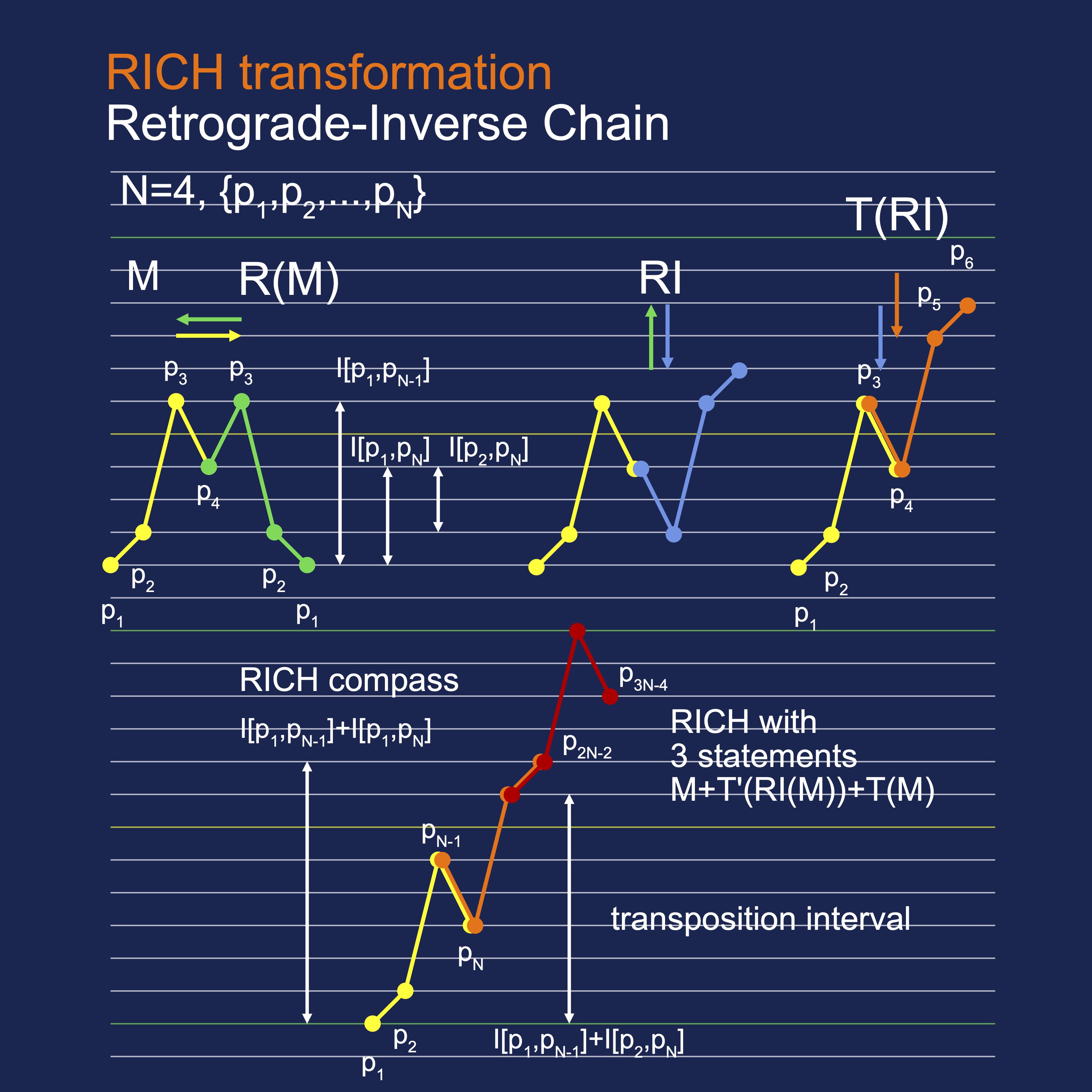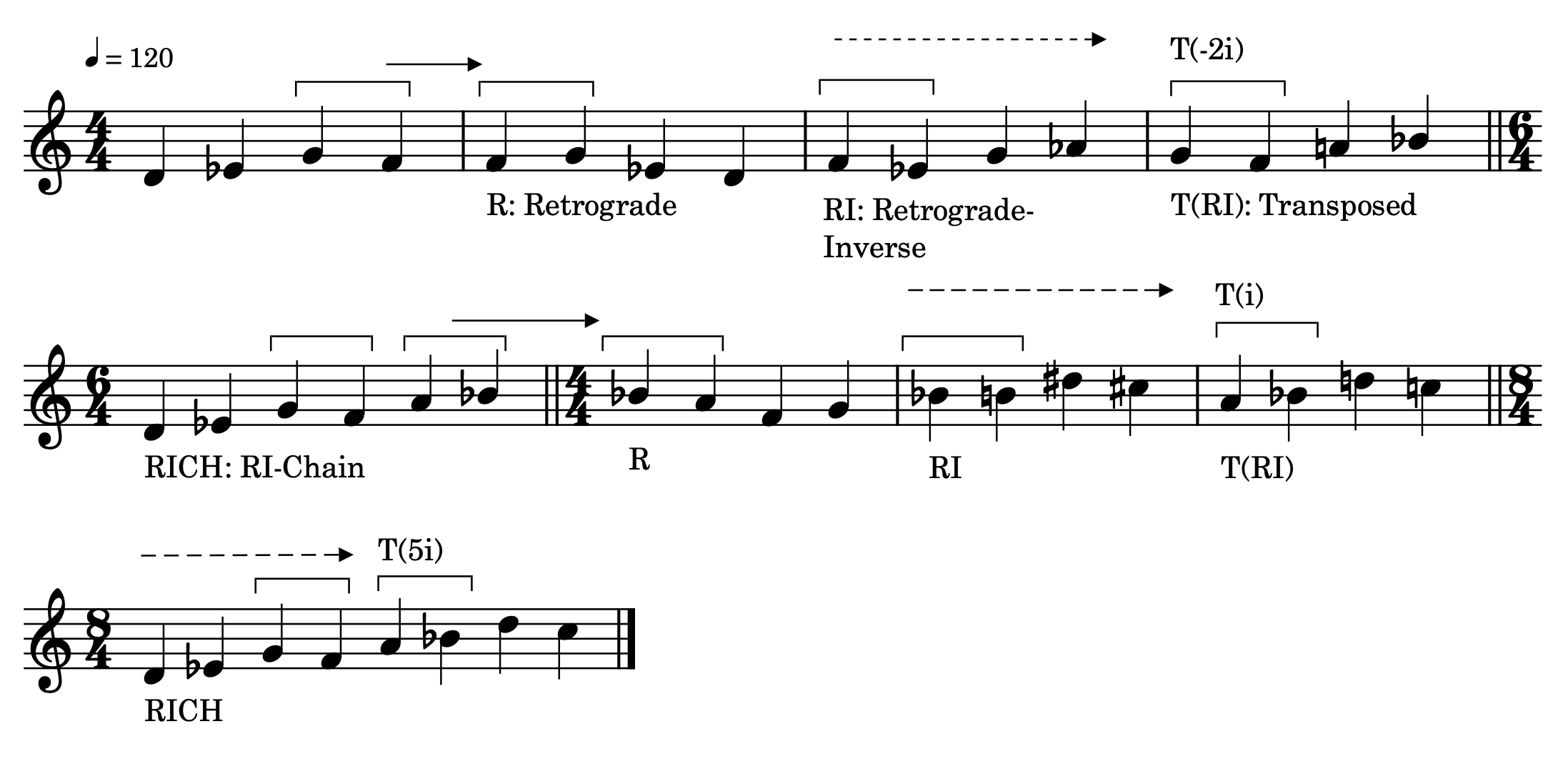Homepage > Documents > Retrograde-Inversion Chain
Retrograde-Inversion Chain
The RICH Transformation
This page contains a short introduction and a link to the video tutorial about the Retrograde-Inversion Chain, a pitch transformation technique that is particularly well-suited for composition of melodies and modulating transitions with a coherent inner structure. Also there is a companion booklet with diagrams and score examples.
RICH Introduction >> | RICH Links >>
Introduction to the Tonnetz
 The Retrograde-Inversion Chain (RICH) is a transformation in the pitch domain, that creates a longer melody from a short ordered note series motif M, with two overlapping notes. The example in the diagram and in the staff (below) consists of four pitches M={p1,...,p4}={d,eb,g,f} and at the end of the transformation process the common notes must be the two last notes g-f.
The Retrograde-Inversion Chain (RICH) is a transformation in the pitch domain, that creates a longer melody from a short ordered note series motif M, with two overlapping notes. The example in the diagram and in the staff (below) consists of four pitches M={p1,...,p4}={d,eb,g,f} and at the end of the transformation process the common notes must be the two last notes g-f.
First we write the retrograde R(M)={p4,...,p1}={f,g,eb,d}. In the next step we invert the retrograde, mirroring the notes about the pitch f and we obtain RI={f,eb,g,ab}. Finally we transpose this transformed motif by a major second upward, yielding T(RI)={g,f,a,bb} and append this to the original motif, while incorporating the overlap. The result is the retrograde-inversion chain, the 6-note series RICH(M)={d,eb,g,f,a,bb}. Through the RICH transformation the melody will achieve symmetry and internal coherence.
 We may repeat this procedure and append more sub-phrases to the chain, as shown in the example in staff notation. The third sub-phrase starts on pitch a and is a transposed version of the original motif M. The total length now is 8 notes. The 4th sub-phrase is a transposition of the 2nd statement, etc. The transposition interval in our example is a perfect fifth up.
We may repeat this procedure and append more sub-phrases to the chain, as shown in the example in staff notation. The third sub-phrase starts on pitch a and is a transposed version of the original motif M. The total length now is 8 notes. The 4th sub-phrase is a transposition of the 2nd statement, etc. The transposition interval in our example is a perfect fifth up.
Further reading: the RICH transformation is discussed in David Lewin's book Generalized Musical Intervals and Transformations, Oxford University Press (2007). Joseph Straus in Strawinsky's Late Music, Cambridge University Press (2001) shows a number of examples in the post 1950 serial and dodecaphonic music by this composer.
RICH Transformation video tutorial
On my YouTube channel I uploaded a video tutorial on the Retrograde-Inversion Chain. There also is a companion booklet.
Here are the links:
- YouTube video tutorial: Retrograde-Inversion Chain: If I were a RICH man! (23:36) is about the RICH fundamentals and properties. After presenting a number of classical music examples this technique is applied to the compositon of three melodic phrases and three (modulating) transitions
- Booklet: Retrograde-Inversion Chain, available on my Patreon page (PDF, A4, 15 pages). RICH transformation diagrams, and score examples.
